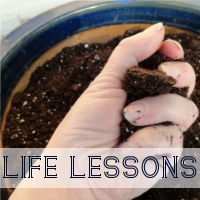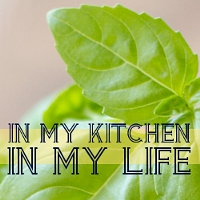| In my opinion, rotisserie chickens are in the top three convenience foods available today — a well-made product at a fair price |
We rarely use a rotisserie chicken as the main dish of our meal like we would a chicken I had roasted myself; instead, we pop those babies right from the cooler to the fridge when we get home from the store and use them over the next few days in a variety of applications. The meat may appear in salads, soup, casseroles, or pasta sauce. Having that bowl of cooked chicken or turkey waiting in the fridge is an ace up my sleeve for quick and tasty meals. Refrigerator asset, indeed.
And the meat is just the first of two dividends — I can simmer the picked-over carcass to make a simple stock. Please don’t be intimidated by making stock. Yes, you can get rather fancy with it and talk about ratios of proteins to vegetal additions and debate simmering times, but unless you are a cooking school teacher, you really don’t have to worry about all that. Just pile your poultry carcass, raw or cooked, into a pot. Scrape in any pieces of skin or juices or other goodness you have. Add cold water to just cover it (or come as close as you can), and bring the liquid to a simmer. A grey-ish scum may gather and float on the surface. You can use a big slotted spoon to skim that off if you like, but nothing terrible will happen if you don’t. Really, that’s all you have to do. If you feel like it, you can add clean trimmings (or pieces) of celery, onion, leek, and/or carrot. You can add herbs like parsley, thyme, bay leaves, or chives. You can add whole peppercorns. You can add salt, but I advise waiting until the end of the cooking so you can control the level more accurately. (Or, do what I do and don’t add it until you are using it at its ultimate destination.) You can add a few tablespoons of cider vinegar, which many say increases the nutritional value of the stock because it helps pull substances from the bones. They may well be right, and I usually add some because it sure won’t hurt. The amount of time it simmers is up to you and your schedule. Now and then mine only goes for an hour and I end up with a light broth. More often, I let it go all afternoon and then I strain and chill it while I am working on dinner. Occasionally, I let a large amount go all night over my simmer burner. And often enough I do it overnight or all day in my crockpot. It’s just a matter of whim and convenience for me most times.
When the stock is as simmered as you wish, turn off the heat and let it cool awhile unless you like to live dangerously. Either fish out most of the big pieces and discard them (any meat will have given all of its flavor to the liquid unless you just cooked raw poultry for an hour or so, in which case you certainly should use the meat, too) and strain the rest through a fine strainer, or send the whole shebang through a strainer if you have an amount that lets you handle it that way. Again, you can get really complicated with coffee filters and rafts and what-not, but I’m not making consomme, I’m making plain old stock for soups or dumplings or sauces, so one trip through a basic strainer does the job for me.
Chill the strained stock until the fat rises to the surface. I do this overnight, and in the morning it is a simple matter to remove pieces of congealed fat. I can discard it and often do, unless I’m making dumplings. Then I skip this step because dumplings want plenty of good chicken fat.
Now what? Well, that depends. You can freeze portions of stock in ziploc bags or jars or plastic containers. You can keep the stock in the fridge for a few days. If you don’t get around to using it, just dump it back into your pot and bring it to a boil. Simmer for 10 minutes and you can re-start the stock’s fridge shelf life ticker.
Making stock is an activity that, once you have decided to make it a part of your life, becomes a background activity that just fits in wherever and however you want it to, so don’t judge the ratio of work to value the first time you do it. You have to give it a few tries to give it a chance to become second nature. You also have to learn ways you can use the stock so that you come to truly appreciate its value. It’s a process.
Here is a good recipe to help you use your poultry refrigerator assets. And what an asset this dish can be, too! You can double or triple it and freeze the extras before baking (without potatoes, please) and have something to send to the new mom or the sick friend or for your own family on a future busy day.
Lori’s Chicken Pot Pie
serves 8 or more folks
1 single or double crust pie pastry recipe or one of those ready-to-unroll crusts
3 T. butter or margarine
1 large onion, medium dice
3 T. flour
2 c. milk or broth mixed with milk; sub some cream for part of the milk if you feel like luxury
1 t. salt
grinds pepper to taste
¾ t. dried thyme, crumbled between your palms
Melt fat over medium-high heat in medium saucepan. Saute onion until soft but not brown, about 5 minutes. Stir in flour until smooth. Stir in liquid and cook, stirring constantly, until it has simmered for 2 minutes. Add seasonings.
Mix in a large bowl:
cooked chicken (or turkey), about ½ c. per serving, or 4 c.
cooked veggies – peas and carrots are my usual, sometimes with potatoes – amounts? about 1 lb. bag peas (I don’t cook these first) and maybe 3 c. of carrots?
Taste the white sauce – if it is not pretty highly seasoned, mix some more salt and pepper into the meat/veggies. Pour the white sauce over the meat/veggies and mix gently. Line a large baking dish with pie crust, if desired, and turn the filling into the dish. Top with pie crust, flute edges, cut vents, and freeze or bake.
If baked immediately: 375 degrees for 45 minutes or until golden and bubbling.
If baked cold and thawed: 350 degrees for nearly an hour.
Notes:
I usually use only a top crust.
If I am making my crust from scratch, I often put the thyme into the crust and leave it out of the filling.
This is good with some mushrooms and a little minced garlic sautéed along with the onion.
This doesn’t make a very saucy filling, Do one and a half recipes of white sauce if you want lots of gravy.
What assets do you love to find in your kitchen?
 Follow
Follow









